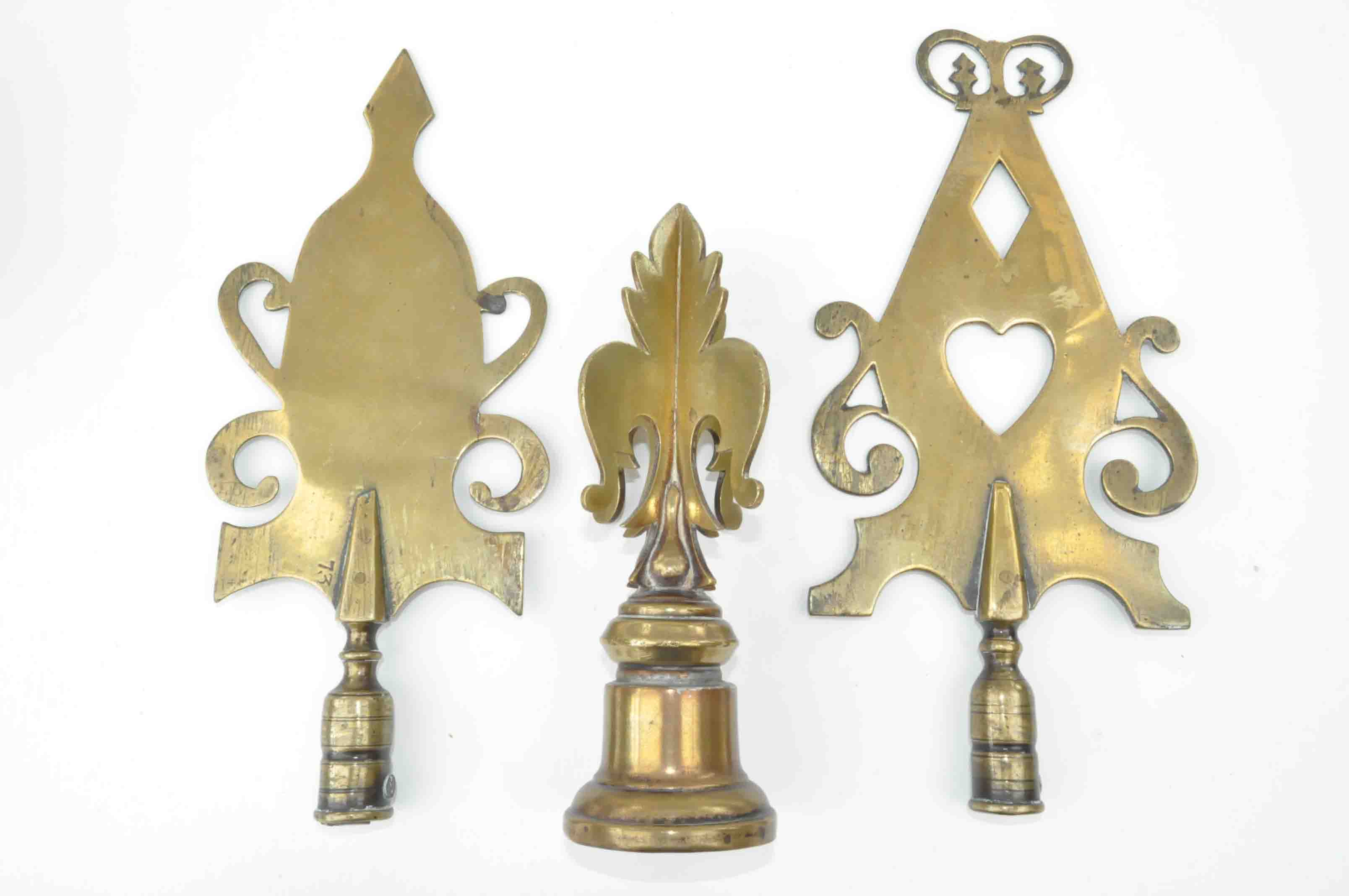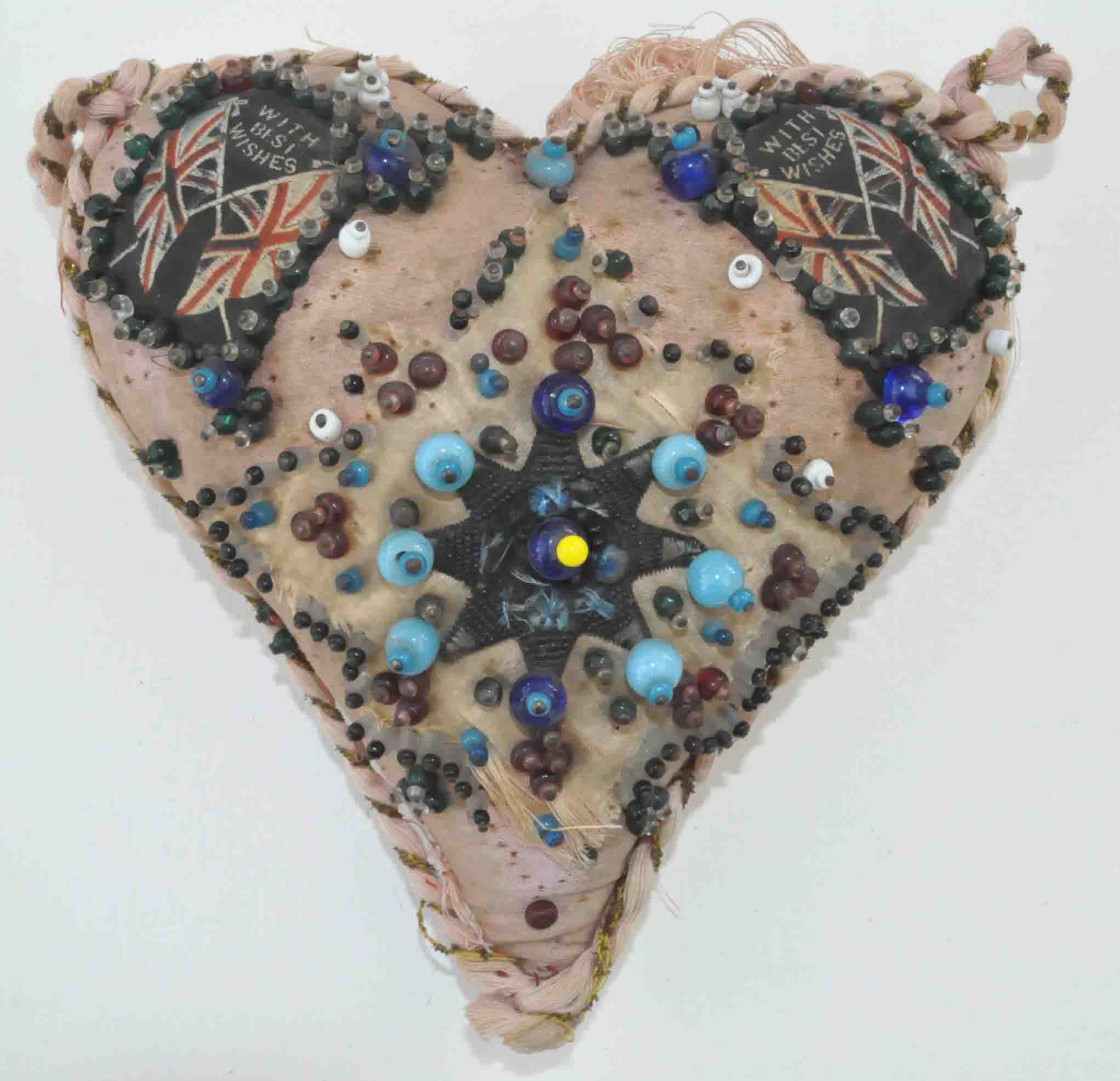The History of
British Folk Art
The information presented here is a précis of Chapter 4 of my book.
Use of the word ‘folk’ conjures up gaily dressed peasants probably
dancing round maypoles, singing, drinking and laughing. In reality
the people who produced amateur folk art were simple men and women
for whom life was largely a slog. They were uneducated, generally
illiterate and they left little in the way of contemporary records
of the artwork they made. Of the 245 detailed farm and cottage
inventories from 1635 – 1749 analysed in Steers’ 1950 book
very few (perhaps 5%) mention objects with any kind of decoration.
These were the type of dwellings that we would expect to have
contained some folk art objects so it is clear that little value was
placed on them at that time.
Fairs such as St Bartholomew’s Fair at Smithfield (which ended in
1850) involved much folk art, most of it decorative and displayed on
rides and sideshows such as Punch and Judy rather than being offered
for sale. It was there more for entertainment than for trade, the
major purpose of these fairs was the sale of livestock and,
occasionally, people.
The Great Exhibition in 1851, conceived as a showcase for Britain’s
manufacturing industries, did not contain anything which we would
recognise as folk art. A great deal of the Victorian age was geared
to mechanising production but throughout this time individuals,
usually those away from towns and cities, were still expressing
their individuality and documenting their lives in paintings and
other one-off artefacts.
Throughout the 19th century there were regular
pageants and processions at which folk art was on display on banners
and signs. Icons such as Old
Snap the Norfolk dragon and the Chester and Coventry Guild
Giants would be paraded through the town often as part of a mayoral
procession. Many trade associations displayed their insignia at the
head of annual parades on large and often naïve banners.
The Industrial Revolution was to some degree responsible for
the demise of folk art because the skills traditionally needed to
construct utility items were no longer in demand. When a simple
chair could be bought from a factory for a few pence people were
much less inclined to learn how to carve, turn and join wood. People
started working in factories rather than at home, there was
migration away from villages to towns and new technology and
materials became available. Prior to the Industrial Revolution
pastoral and sea-faring lives provided spells of free time that
could be used to good effect as far as producing folk art was
concerned. On farms there was a natural lull during the dark hours
of winter and for sailors the time spent travelling to and from
fishing grounds and when becalmed was available. It was during these
times that many amateur artists took to decorating the tools of
their trade or producing items for their families and sweethearts.
When working in factories became more the norm the working day was
regimentally defined, there was little ‘down time’ and time outside
the long factory hours started to become ‘leisure time’.
In the late 19th century the aims of the Arts & Crafts
movement helped to rejuvenate interest in folk art ideals. Socialism
aside, William Morris’s promotion of individualism in design and
construction has much in common with folk art.
Academic interest in folklore came to the fore in the last
few years of the 19th century when the Egyptologist Sir
Flinders Petrie proposed a museum portraying the cultural history of
the British Isles, in Surrey. Unfortunately his proposal came to
nothing, as did a subsequent 1912 proposal by a group of eminent
sponsors for the Crystal Palace to house a British Folk Museum.
In 1926 a Department of Folk Life was created as part of the
National Museum of Wales but it was not until 1946 that a dedicated
museum, the Welsh Folk Museum, was established in Wales. In 1928 the
‘British National Committee on Folk Art’ was established followed by
a ‘Folk Museum Committee’ but lack of funding meant that their
combined efforts came to nothing. A brief appraisal of folk art in a
journal published in 1938 concluded that it was ‘… mostly of an
uncultured nature’.
Throughout the 1930s folk museums started to be formed; in
1936 a small folk museum opened on the island of Iona and in 1938 an
open air museum at Gregneash, Isle of Man. Other museums with
related holdings were opened pre-World War II, notably the Castle
Museum in York. In 1951 the University of Reading established the
Museum of English Rural Life, now situated in the centre of Reading.
Its mission is to present a record of rural life relating to food,
farming and the countryside and it is one of our more important
resources.
British author Enid Marx (1902-1998) was an early enthusiast
for folk art. At the end of the Second World War she commented that
‘the “innocent eye” is disappearing’ as she started to find fewer
and fewer examples of popular art. She put this down to increased
industrialism, increased urbanisation, changes in social habits and
a general downturn in individuality.
The Festival of Britain in 1951 was aimed mainly at
celebrating the nation’s recovery after World War II so many of its
exhibits were forward- rather than backward-looking. The mission of
the Arts Council who mounted the Festival was ‘to increase the
accessibility of the fine
arts to the public’, however as part of the Festival the Whitechapel
Art Gallery presented an exhibition entitled ‘Black Eyes and
Lemonade’ of ‘British Popular and Traditional Art’.
Its organisers, Barbara Jones (1912-1978) and Tom Ingram,
struggled as we do today to find a workable definition of folk art;
in the accompanying catalogue Jones said ‘we have not been able to
find a satisfactorily brief and epigrammatic definition of Popular
Art’. Her view was that older pieces tended to have been amateur
folk art and newer pieces made by professionals.
1951
also saw the publication of two important books relating to folk art
– The Unsophisticated Arts
by Barbara Jones and English
Popular Art by Margaret Lambert (1906-1995) and Enid
Marx. Marx and Lambert were major champions of the genre from the
1950s to the early 1960s. In
The Unsophisticated Arts
Jones suggests the start of the Great War as the ‘tombstone date’
after which traditional popular arts declined sharply.
In September 2009 the Tate (funded by the Arts and Humanities
Research Council) organised a series of seminars starting in April
2010 aimed at identifying key research areas in the under-worked
field of British Folk Art. The project was led by Dr Martin Myrone,
a curator at Tate Britain, whose 2009 paper, Instituting English
Folk Art, Visual Culture in Britain, is a detailed academic study of
folk art in Britain. The results of these seminars were not
available when this précis was written.
The Author is unaware of any other initiatives to redress the
balance between folk and fine art in British public collections.




